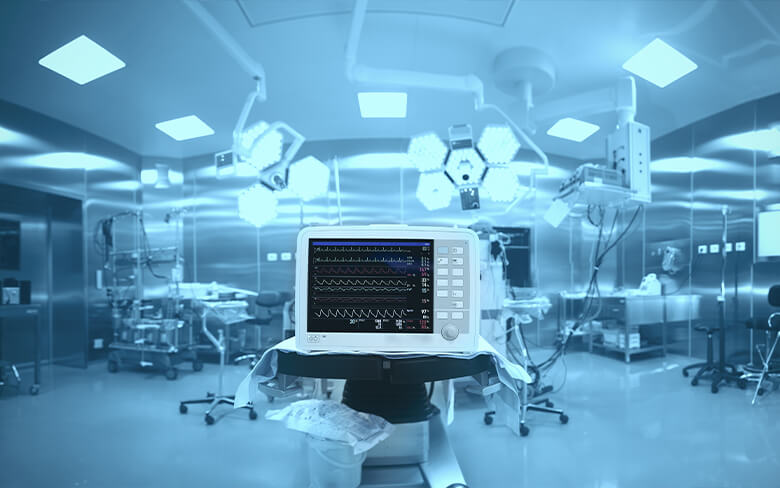When we think of surgery, our minds often jump to the skill of the surgeons, the sophistication of the instruments, and the critical nature of the procedures. However, one of the most crucial yet often overlooked elements in an operating room (OR) is the surgical lighting. High-quality surgical lights are indispensable, providing the clarity and precision needed for successful outcomes. This blog explores the importance of surgical lights, their evolution, and the key considerations in their design and implementation.
The Role of Surgical Lights
Surgical lights are designed to illuminate the surgical site on a patient, ensuring that medical professionals can see small, low-contrast objects and bodily structures at various depths. The importance of good lighting in surgery cannot be overstated; it directly impacts the surgeon’s ability to see clearly, perform accurately, and make critical decisions.
1. Enhancing Visibility: The primary function of surgical lights is to provide a consistent, shadow-free light that enhances visibility. High-quality surgical lights minimize shadows caused by the hands and instruments of the surgical team. This is achieved through multiple light sources arranged in a way that shadows from one light source are illuminated by another.
2. True Color Rendition: Accurate color representation is crucial in surgery. Surgeons need to distinguish between different tissues, organs, and fluids. Surgical lights with high Color Rendering Index (CRI) values ensure that colors appear natural and true to life, aiding in the identification of critical structures and conditions.
3. Reducing Eye Strain: Extended periods of surgery can be taxing on the eyes. Properly designed surgical lights provide a uniform light field and optimal brightness, reducing the need for surgeons to squint or strain their eyes. This not only enhances comfort but also maintains focus and reduces fatigue.
Evolution of Surgical Lights
The evolution of surgical lighting reflects advancements in technology and a deeper understanding of the needs within the OR.
1. Halogen to LED Transition: Traditional halogen lights were once the standard in surgical lighting. They provided bright illumination but had drawbacks such as high heat emission and short lifespan. The transition to LED (Light Emitting Diode) technology marked a significant advancement. LEDs offer superior brightness, energy efficiency, and longevity. They produce minimal heat, reducing the risk of tissue drying and maintaining a more comfortable environment for both the surgical team and the patient.
2. Adjustable Light Intensity and Focus: Modern surgical lights come with adjustable intensity and focus settings. Surgeons can customize the light field to match the specific requirements of the procedure, whether it requires broad illumination or focused light on a small area. This flexibility is critical for different types of surgeries and varying patient conditions.
3. Integration with Imaging Systems: Contemporary surgical lights often integrate with imaging systems, allowing for real-time visualization and better coordination during procedures. This integration enhances precision, as surgeons can see enhanced images while having the surgical site well-lit.
Key Considerations in Surgical Lighting Design
Designing surgical lights involves a blend of engineering, ergonomics, and an understanding of surgical needs.
1. Shadow Management: Effective surgical lights must manage shadows to provide consistent illumination. This is typically achieved through multiple overlapping light beams. Advanced designs ensure that shadows from instruments and personnel are minimized, maintaining clear visibility at all times.
2. Color Temperature and CRI: The color temperature of surgical lights is carefully chosen to replicate daylight, providing a natural viewing experience. A high CRI ensures that colors are rendered accurately, which is crucial for identifying different tissues and conditions accurately.
3. Ergonomics and Ease of Use: Surgical lights should be easy to position and adjust during procedures. Modern lights are often mounted on flexible arms that can be maneuvered with minimal effort. Some systems also include touchless controls to maintain sterility.
4. Durability and Maintenance: Surgical lights must be robust and reliable, withstanding the demanding environment of an OR. They should have a long lifespan and require minimal maintenance to ensure consistent performance without frequent interruptions.
The Future of Surgical Lighting
The future of surgical lighting promises even more innovations aimed at improving surgical outcomes and efficiency.
1. Smart Lighting Systems: The integration of smart technology in surgical lights will allow for automated adjustments based on the procedure type and real-time conditions. These systems could optimize light settings automatically, reducing manual adjustments and improving workflow.
2. Enhanced Imaging and Augmented Reality: Future surgical lights may incorporate enhanced imaging technologies and augmented reality (AR) to provide surgeons with more information directly in their field of view. This could include overlays of patient data, anatomy guides, and real-time feedback.
3. Energy Efficiency and Sustainability: As healthcare moves towards more sustainable practices, surgical lights will continue to evolve to be more energy-efficient and environmentally friendly, without compromising performance.
Conclusion
Surgical lights are a cornerstone of modern healthcare, playing a critical role in the success of surgical procedures. From providing clear visibility to reducing eye strain and accurately rendering colors, these lights are indispensable in the operating room. As technology continues to advance, surgical lights will become even more sophisticated, enhancing the capabilities of surgeons and improving patient outcomes. By understanding and appreciating the importance of surgical lighting, we can better support the medical professionals who rely on this essential tool to save lives and improve health every day.
